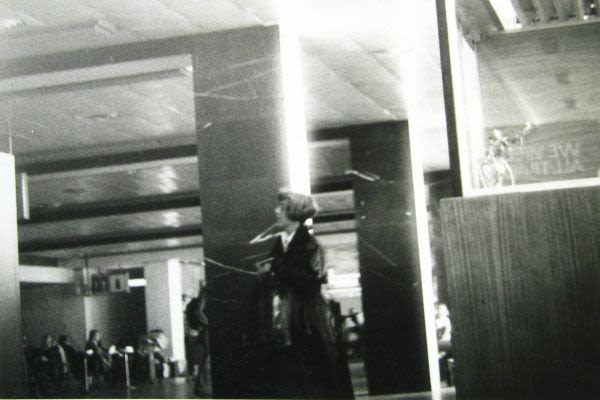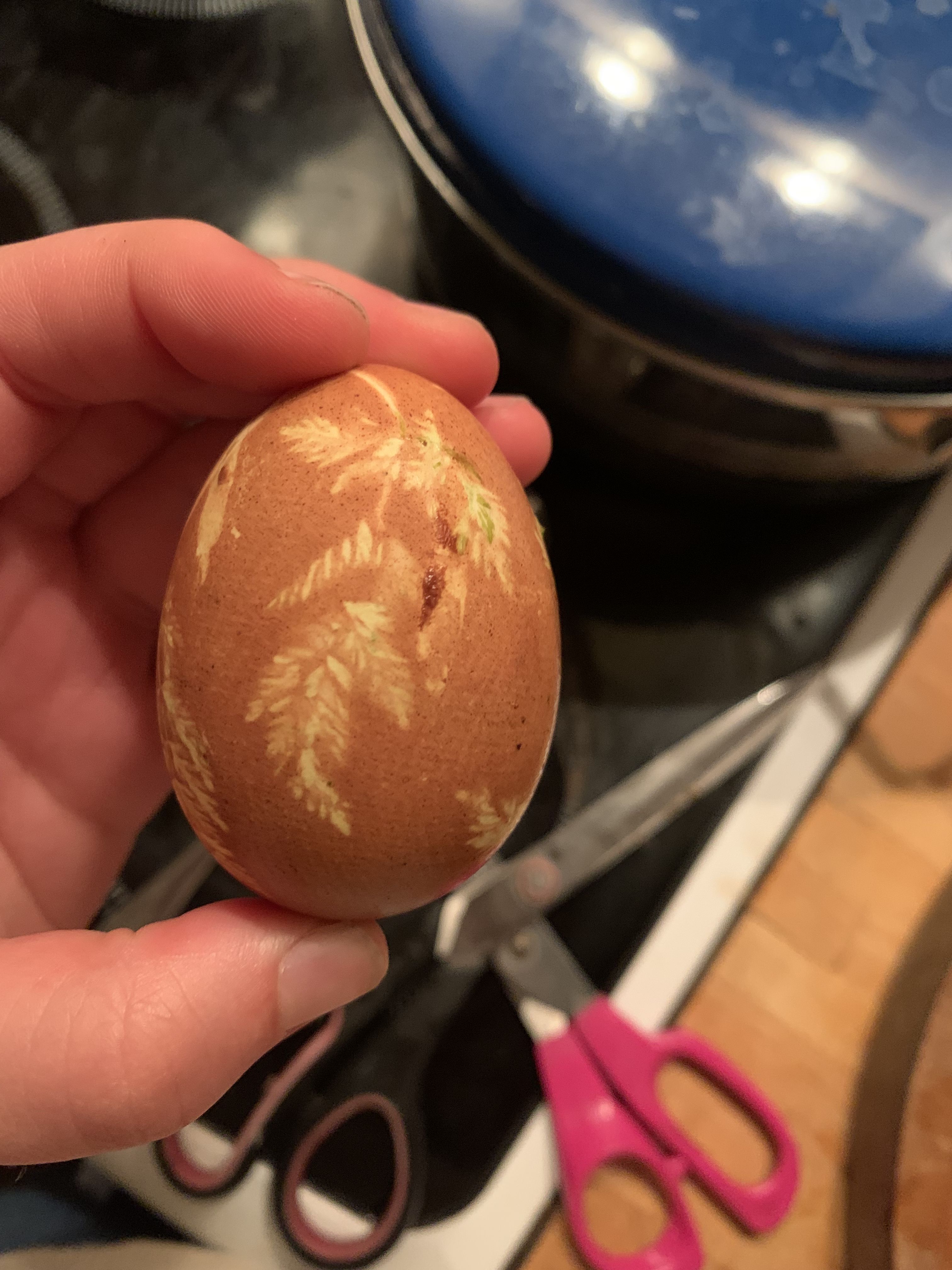My Body, the Artist
Anti-Communist Art, Artists, and Art Making in Prague

I've never needed anything like I need art.
And I've never been as steeped in art as I was in Prague the spring of my Junior year of college.
Growing up in small town Indiana, I wasn't exposed to much art. I took ballet classes with all the local five year olds, saw college students put on the Sound of Music for our town theatre's Christmas show, and learned, to my great shock, how purple could be used to shade a penguins feathers in art class, but I was not exposed to much work that pushed boundaries or aimed to create a larger conversation.
The older I got, however, the more I sought this sort of work out. The first time I realized art had a power over me that nothing else did was when I saw Pippin at 14. I was staying with my aunt in Dallas, and she took me one evening to see the show. From the front row of the balcony, wearing my brand new dress that I couldn't wait to show off for my impending first day of high school, I watched the final scene of the show in which- SPOILER ALERT!-the titular character, his newfound family, and the stage itself is stripped almost completely bare. Pippin, for the first time, learns his life, however small, however plain, can be beautiful. I held my breath to try and stop the tear from creeping over my lower eyelid, praying my aunt didn't see; I could feel my heart beat in my sternum, like my heart was a centimeter underneath my skin. It felt like that moment seeped into my bones, because I think this was the first time I learned that too.
Ever since then, I've been chasing that high.
When choosing my abroad program, I knew that I wanted to do something that focused heavily on the arts. This was partially because both of my majors, theatre and creative writing, are in the arts, but also because I wanted to have the chance to spend a semester dedicated fully to my artistic practice. When I found SIT: Czech Republic- Arts and Social Change, I knew this had to be it. Although I knew little about Prague or the Czech arts scene, I was enthralled by the chance to study arts as a social justice mechanism. As a theatre major here at Denison, I have a concentration in anthropology because I am extremely interested in using art to explore social phenomenons, so this program seemed perfect.
And truly, it was.












I spent some part of almost all of my days in Prague at a theatre, a museum, an art gallery, a dance show, or the plant filled and project strewn studio space in the loft of our school.
In addition to our Czech class (dobrý den Zuzanna!) the seven other artists on my program and I took class on Czech literature, theatre, and performance art, arts based research, and an individualized art practicum. Because the communist occupation of the easter block countries had strict laws against about the type of art that could and couldn't be displayed publicly, the Czech Republic has a deep history of underground artists, performance groups, schools, literature rings etc. Since the Czech Republic didn't gain independence until 1989, most of our professors were big players in this movement too.
Our theatre history professor, Barbara Day, one day showed us the surveillance photos taken of her by secret police who were monitoring her for her participation in underground theatre rings. Our literature history professor took us to a library that is dedicated to preserving the secret samizdat literature that he helped publish and distribute. Our art history professor took us on a walking tour of the city centre and showed us all the building that used to house underground artist studios and pop up protest pieces, some of which are still around.
Of everything we saw and learned though, practicing the art was the most meaningful thing for me.
The video above is an early rehearsal of the final project for my physical theatre class with my friend Grace. Before I went to Prague I had some idea that physical theatre was the art form I was most drawn to- a theatre of the body that tells more complex, inner stories than a "regular play" but I was still so unsure of what it meant to do physical theatre. The first week of classes, however, the school gave us tickets to a physical theatre performance in the same theatre that I would go on to spend every week learning at, and it was one of the single most amazing pieces of art I've seen in my entire life. I felt that same heart-in-the-sternum feeling from when I was 14. After the show we got a drink with one of the performers, who was friends with our theatre professor, and when she asked how we liked the show I said "that is the kind of theatre I wasn't to spend the rest of my life making."
I think I went on to have essentially that same feeling at least once a week for the rest of the semester. Since we were an art program, the school gave us tickets to some sort of performance, gallery opening, or museum a few times a week. I think more than anything last semester this constant exposure to new work is what changed the way I approach art. Because it was suppressed for so long by Communist forces, Czech art now is some of the most explosive and forward thinking art I've ever seen.
The performances we saw completely obliterated my ideas of genre and form. I went to one theatre productions where you walked through a large manor -like building however you like with each room being a different micro performance ranging from interactive music making to a makeshift movie theatre with over ten screens playing different films about intimacy and connection to a man ritualistically chugging a pint of beer. I saw another performant where the audience unknowingly sat on speakers so you could feel the performers voice vibrate through your body as she spoke. Unlike the theatre I've grown accustomed to in the US, Czech theatre used the body as the basis of creation; because these artists once had nothing but themselves to create their secret art out of, it became the tool that they use with the most finesse, the most power, and that is a lesson that has completely changed the way I approach theatre.
For the final month of our program, each student got to create their own independent study project connecting anthropologic research to art. Some of the projects included a poetry collection about daily rituals, a dance piece about the urge to create art even in situations of constraint, and a magic show with tricks based off of the art of famous Czech collage maker Jiří Kolář.
For my project, I combined the deeply body-based theatre I fell in love with on this trip with the deep-rooted traditions of Czech folk culture to create a twenty minute solo performance piece called "Death Belongs to Life: A Ritual in Performance."
I spent this month going to museums on Czech folk culture, interviewing Czech natives--including a professor of folklore, watching traditional dances and music performances, and attending centuries old social rituals that are still practiced today, such as the burning of Old Mother Winter- the burning of a straw witch meant to represent the movement from winter to spring.
The final performance was not a play by the standards that I once understood them to be, but rather a twenty minute ritual that I created using the themes of Czech folklore and folk tradition- specifically the connection of earth, body, and rebirth.
I got to perform my piece in the garden of the theatre that housed many of the performances that I now consider the most crucial experiences for my artistic development surrounded by some of the best artists I've ever worked with. I have never been prouder of any piece of art I've ever made.
Everyday I think about Prague. I think about the city, my friends, my host family, but most of all I think of the world it opened for me as an artist. I wouldn't be who I am today if I weren't exposed to the radical art making I witnessed that semester--neither as an artist nor a person, and I will never stop striving towards the heart and humanness that I got to be a part of in my time as a Czech theatre maker.













